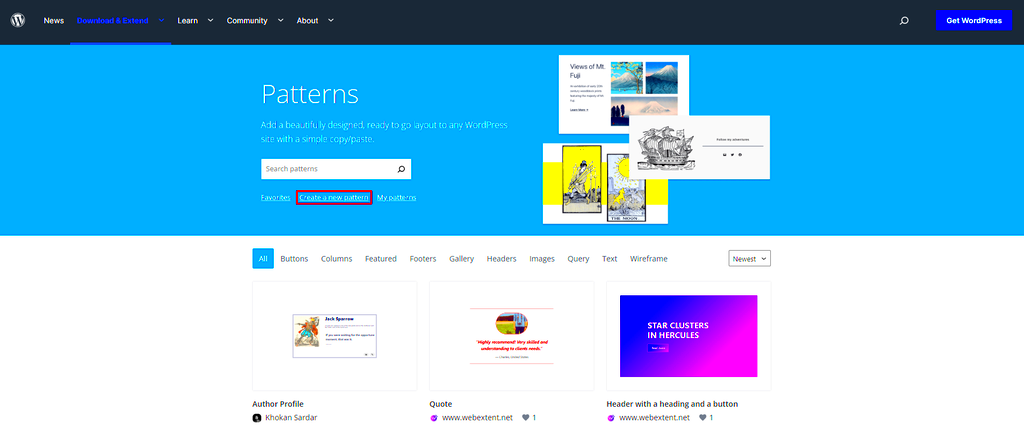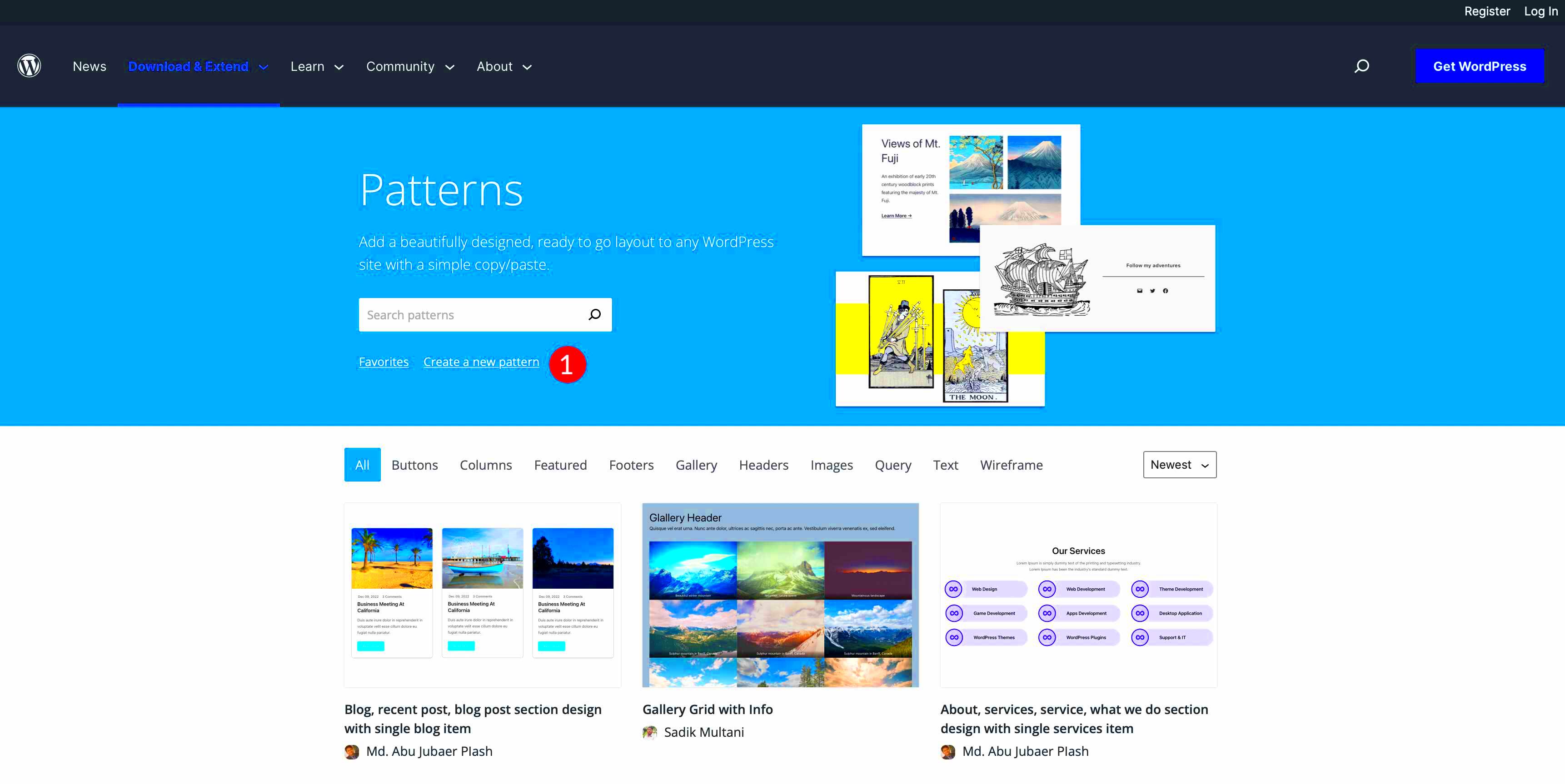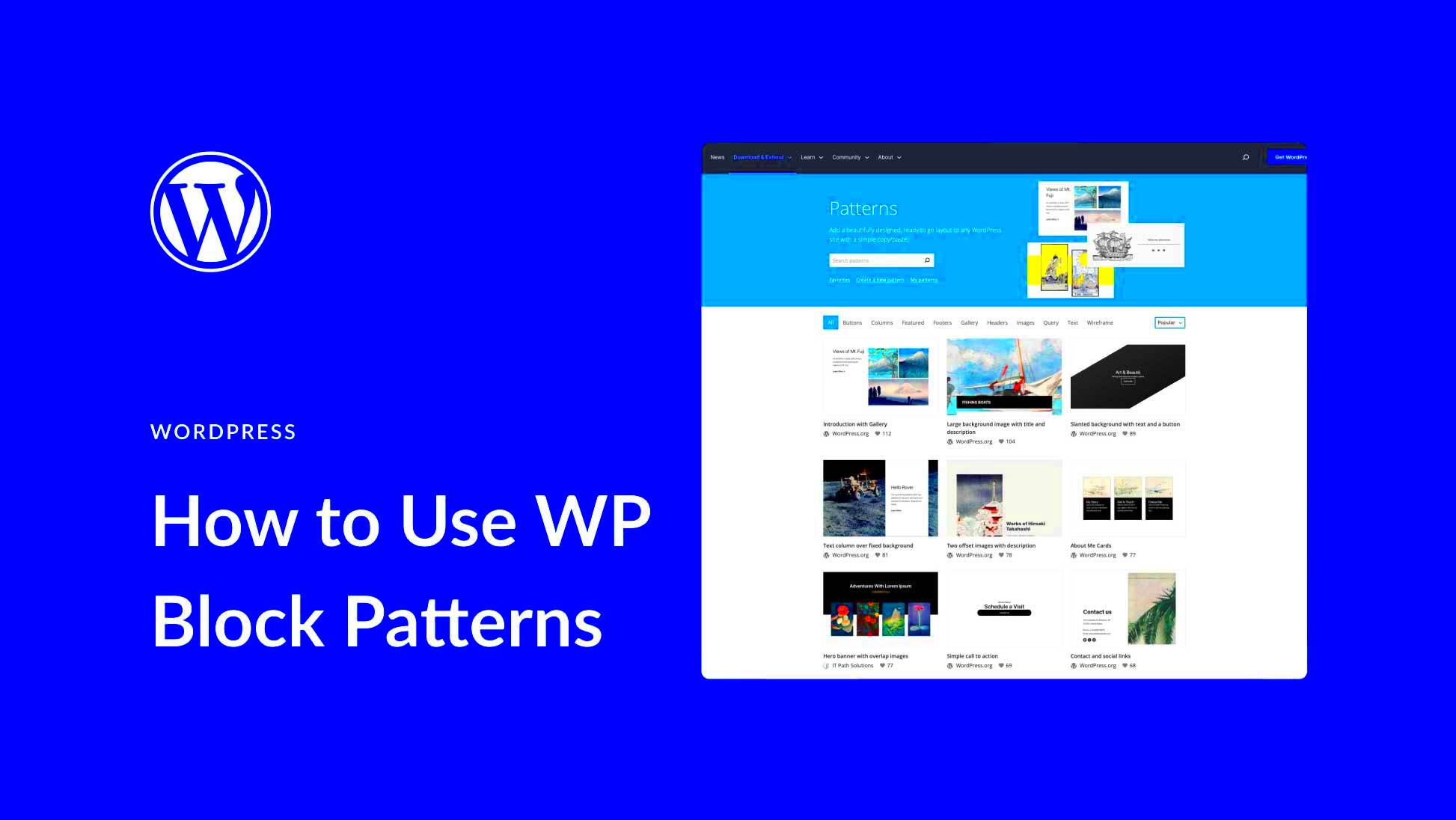If you’re diving into the world of WordPress, you’ve likely heard about themes and patterns. They’re not just buzzwords; they play a crucial role in how your website looks and functions. WordPress themes are essentially templates that dictate the style and layout of your site, while patterns are reusable blocks of content that enhance your design and usability. In this blog post, we’ll explore the ins and outs of
Understanding WordPress Patterns

WordPress patterns are a relatively recent, but invaluable addition to the WordPress ecosystem. They allow users to create complex layouts and content structures without needing to write any code. Here’s a breakdown of what you need to know:
- What Are Patterns?
Patterns are predefined block layouts you can insert into your posts or pages. Imagine them as templates for your content blocks. Want to create a styled testimonial section or a gorgeous hero image with text overlay? There’s likely a pattern for that!
- Benefits of Using Patterns
There are numerous advantages to using patterns:
- ### Time-saving:
You can insert a pattern in seconds, skipping manual design work.
- ### Consistency:
Patterns ensure a uniform look across your site.
- ### Accessibility:
Options are available for everyone, including those less tech-savvy.
- ### Time-saving:
- How to Access Patterns
To start using patterns, simply navigate to the block editor, click on the “Patterns” tab, and explore. You’ll find a plethora of ready-to-use designs!
Remember, patterns not only enhance your design but also streamline your content creation process. So grab those patterns and get creative with your WordPress site!
Common Upload Issues with Patterns

When diving into the world of WordPress themes and patterns, users may encounter a variety of upload issues that can be quite frustrating. Understanding these common problems can save you time and effort. Here’s a brief overview of the most frequent upload issues:
- File Size Limits: One of the most common issues arises from exceeding the maximum upload size limit set by your hosting provider. If you’re trying to upload a large pattern file, you may find yourself hitting a wall.
- Incorrect File Types: WordPress supports certain file types for uploads, typically including .zip files for themes and plugins. If you’re trying to upload a pattern file in the wrong format, it simply won’t work.
- Theme Compatibility: Not all patterns are compatible with every theme. If your theme is outdated or doesn’t support the block editor, you might face issues when trying to upload specific patterns.
- Server Configuration: Sometimes server settings can prevent uploads. This could be related to security settings, permissions, or PHP configuration limits, which might lead to unexpected errors.
- Cached Data: Cached data can also interfere with the upload process. If you have aggressive caching enabled, it might work against you when trying to see your new patterns immediately.
If you’re facing any of these upload issues, don’t fret! With the right troubleshooting techniques, you can pinpoint the problem and resolve it swiftly. Staying aware of these common pitfalls will streamline your WordPress experience and help you get back to creating captivating content for your site.
Diagnosing the Problem
Encountering an upload issue with patterns in WordPress can be daunting, but diagnosing the problem doesn’t have to be. Start by asking yourself a few critical questions that can narrow down the root cause.
- What Error Messages Are You Seeing? Pay attention to any error messages that pop up during the upload process. These messages often provide valuable clues to the nature of the problem.
- What File Type Are You Uploading? Confirm that the pattern file you’re trying to upload is in the correct format. If it’s a .zip file, ensure it contains the required files and folders for a WordPress pattern.
- How Large Is the File? Check the size of your file. If it’s close to or exceeds the limit set by your server, you’ll need to either compress it or contact your hosting provider for assistance in increasing the limit.
- Have You Cleared Your Cache? If you’ve made significant changes, always clear your cache and refresh the page. Cached versions of your site can sometimes create conflicts that prevent uploads from appearing.
- Is Your Theme Up to Date? Make sure you’re using a compatible and updated theme. If your theme is outdated, consider updating it or switching to a block-compatible theme to utilize patterns efficiently.
By systematically checking these elements, you can effectively diagnose the issue and move toward a solution. Don’t hesitate to reach out to community forums or support for additional help; sometimes a fresh set of eyes can catch what you might have missed!
Methods to Fix Upload Issues
If you’re encountering upload issues while using patterns in your WordPress themes, you’re not alone! Many users face this hiccup, but fortunately, there are several methods to troubleshoot and resolve these problems. Here’s a handy list of solutions you might find helpful:
- Check File Size Limits: Many hosting providers set a limit on the maximum file size that can be uploaded. You can check this limit by going to
Media > Add Newin your WordPress dashboard and looking for the maximum upload size. If your file exceeds this limit, consider compressing it or contacting your host for an increase. - Update WordPress and Themes: Ensure that you are running the latest version of WordPress and that your themes are updated as well. Sometimes, compatibility issues due to outdated software can cause upload failures.
- Increase PHP Memory Limit: A low PHP memory limit can result in upload failures, especially with larger files or patterns. To increase this limit, add the following line to your
wp-config.phpfile:define('WP_MEMORY_LIMIT', '256M');or contact your hosting provider for assistance. - Disable Plugins: Occasionally, a malfunctioning plugin can interfere with uploads. Temporarily deactivate all plugins and try uploading your pattern again. If it works, reactivate the plugins one by one to identify the culprit.
- Check File Permissions: Incorrect file permissions on your server can prevent uploads. Typically, directories should be set to
755and files to644. You can adjust these via an FTP client or through your hosting control panel.
By following these troubleshooting methods, you should be well on your way to resolving any upload issues you encounter while working with patterns in your WordPress themes.
Best Practices for Using Patterns in WordPress Themes
Using patterns in WordPress themes can elevate your site’s design and functionality, but there are some best practices to keep in mind to ensure you achieve the best results. Whether you’re a seasoned designer or just starting out, these tips can help you make the most out of patterns:
- Choose Patterns Wisely: Not all patterns will fit every site. Take time to consider your site’s overall aesthetic and choose patterns that complement your branding. Experiment with different options but always prioritize user experience.
- Optimize for Mobile: In today’s mobile-first world, ensuring your patterns look great on mobile devices is crucial. Test your patterns across different screen sizes and make adjustments as necessary to ensure responsiveness.
- Use Patterns Sparingly: While patterns can add visual interest, overusing them may overwhelm your visitors. Aim for a balance between patterns, whitespace, and content to maintain clarity and engagement.
- Keep Accessibility in Mind: Ensure that your patterns are accessible to all users, including those with disabilities. Use appropriate color contrasts and alt text for images. This not only benefits your audience but also enhances your site’s SEO.
- Regularly Review and Update Patterns: As design trends change and your site evolves, it’s important to periodically revisit your patterns. Remove outdated patterns and replace them with fresh designs that reflect your site’s current style.
By following these best practices, you’ll not only ensure a smoother integration of patterns into your WordPress themes but also create a more engaging and user-friendly website.
7. Additional Resources for Troubleshooting
When you encounter upload issues with WordPress themes, it can feel frustrating. However, you’re not alone, and there are plenty of resources available that can help you troubleshoot these problems effectively. Here are some valuable avenues you can explore:
- WordPress Support Forum: This is an excellent place to start. The community is active and ready to help. Simply search for your specific issue or post a question to get insights from experienced users.
- Theme Developer Documentation: Most premium themes come with thorough documentation. Be sure to refer back to this as it usually contains steps for troubleshooting upload issues specific to that theme.
- YouTube Tutorials: Sometimes visual learning can clarify better than text alone. Numerous creators offer tutorials on common WordPress troubleshooting issues. Search for your specific problem and watch a few videos for guidance.
- Online Courses: If you’re finding these issues recurrent, it could be worthwhile to invest in a course on WordPress. Platforms like Udemy or Coursera feature courses on website management where common troubleshooting methods are covered.
- Blog Posts and Articles: Many experts in the WordPress community maintain blogs filled with tips and tricks. A Google search for “WordPress theme upload troubleshooting” will yield numerous articles that could provide the solution you need.
Remember, sometimes the answer might be only a click away, and using these resources can make your troubleshooting journey a whole lot easier!
8. Conclusion
Troubleshooting upload issues in WordPress can be a daunting task, but it doesn’t have to leave you feeling overwhelmed. By understanding common pitfalls and knowing where to look for solutions, you can swiftly tackle any theme-related upload problems that arise. Here’s a quick recap:
- Diagnose the Issue: Determine whether the problem lies within the theme or if external factors, like server settings, are at play.
- Check Compatibility: Always ensure that your theme is compatible with your current WordPress version.
- Seek Support: Use additional resources like forums, documentation, and tutorials to get the help you need.
Embracing these strategies will empower you to face upload issues with confidence and facilitate a smoother experience when using themes in WordPress. Remember, every challenge is an opportunity to learn something new. So don’t shy away from troubleshooting; instead, take it as a step towards mastering your WordPress environment!



